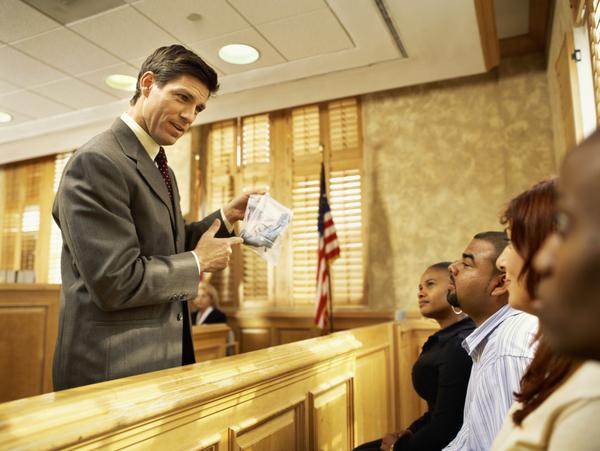Trial attorneys trust professional trial presentations to present evidence clearly.
Trial attorneys trust professional trial presentations to present evidence clearly.
Blog Article
How Test Presentations Enhance Your Argument and Encourage Jurors
Test presentations act as an essential device for improving lawful arguments and convincing jurors. By integrating visual help, narrative structures, and psychological interaction, lawyers can produce an engaging instance that resonates on multiple levels. The critical use visuals not only makes clear complicated details but also records jurors' interest extra efficiently than words alone. Nonetheless, the art of narration plays a just as important duty in changing valid evidence into a compelling narrative, shaping jurors' assumptions - trial presentations. Recognizing these aspects can substantially impact test outcomes, elevating the concern of just how each part adds to this detailed dynamic.

Significance of Visual Aids
Visual aids play a critical role in enhancing the efficiency of trial discussions, as they can substantially increase target market involvement and retention of details. In the context of a trial, where jurors are entrusted with handling complicated info, visual aids serve to simplify and make clear vital factors. Charts, charts, and photos can share data and ideas that may otherwise overwhelm or puzzle jurors, permitting for an extra straightforward understanding of the proof provided.
Furthermore, aesthetic aids help in keeping juror focus throughout the proceedings. By breaking the monotony of verbal testimony, these devices can punctuate vital debates, making them a lot more unforgettable. Effective visual aids can likewise stimulate emotional reactions, which can be pivotal in convincing jurors to line up with the speaker's story.

Crafting Compelling Stories
An engaging story is essential in trial discussions, as it works as the foundation of efficient persuasion. It enables lawyers to weave together realities, evidence, and psychological elements right into a coherent tale that resonates with jurors. This narrative framework makes it possible for jurors to recognize the complexities of the situation while directing them via the lawyer's disagreement.
To craft a compelling narrative, attorneys should concentrate on clearness and coherence. This involves establishing a clear lead character-- typically the client-- and outlining their journey through the occasions in question. Offering the truths in a rational series enhances comprehension and keeps involvement. Furthermore, using vibrant descriptions can develop mental pictures that aid jurors picture the occasions, making the story much more memorable.
Furthermore, incorporating key motifs throughout the presentation enhances the core message and aids in retention - trial presentations. The story should not just share details but additionally evoke a feeling of justice, highlighting the risks involved. Inevitably, a well-constructed narrative promotes a link between the jurors and the case, positioning the lawyer's argument as both credible and compelling, thereby boosting the likelihood of a desirable judgment

Engaging the Court Psychologically
Reliable jury involvement hinges on the attorney's ability to attach with jurors on a psychological degree. This link can significantly impact jurors' understandings and their supreme decision-making. Utilizing sob stories permits attorneys to humanize the case, changing abstract legal ideas into relatable experiences. By providing real-life tales or testimonials, attorneys can evoke compassion and empathy, cultivating a my explanation much deeper understanding of the problems at stake.
Aesthetic help, such as pictures or video clips, can even more boost emotional interaction, providing jurors with dazzling depictions of the situation's human components. Crafting a narrative that highlights the struggles and accomplishments of the individuals entailed makes certain that jurors see past the legal disagreements and recognize the human effects of their choices.
Additionally, tone and body language play a crucial function in conveying emotion. An attorney's enthusiastic delivery can reverberate with jurors, strengthening their psychological investment in the instance. It's necessary to stabilize emotional charms with valid proof, making sure that jurors feel forced to act while staying grounded in the truth. Eventually, a mentally engaged court is much more most likely to be encouraged, making emotional link an important part of effective trial presentations.
Structuring Your Presentation

The body of the discussion must be practically segmented into essential factors, each supported by engaging evidence. It is advantageous to make use of storytelling techniques to weave facts into a story that jurors can easily adhere to. Visual help, such as graphes and videos, can enhance understanding and interaction, helping to highlight essential pieces of proof.
Real-World Instance Research Studies
Examining real-world case researches provides very useful understandings into the art of test discussions and persuasion. The protection group effectively employed a method that incorporated top-level specialist testaments with multimedia discussions, which astounded jurors and inevitably affected their choice.
One more significant example is the "McDonald's Coffee Instance," where the plaintiff's attorneys utilized visuals photos of the injuries endured by Stella Liebeck. trial presentations. This stark visual proof played a crucial function in conveying the severity of her burns, bring about a significant jury honor. Such cases demonstrate that impactful trial discussions commonly rest on the effective assimilation of visuals and storytelling to stimulate psychological reactions from jurors
Furthermore, the "Casey Anthony Test" highlighted the value read of narrative coherence and credibility. The prosecution's failing to develop a compelling timeline diminished their convincing power, emphasizing the necessity of a well-structured discussion. Examining these situations exposes that effective test presentations require strategic planning, psychological involvement, and the ability to resonate with jurors' worths and ideas.
Conclusion
Test presentations dramatically improve disagreements and persuade jurors via the critical use visual aids, compelling narratives, and emotional engagement. By streamlining intricate info and cultivating links with the target market, these components produce a remarkable and impactful experience. A well-structured discussion equilibriums sob stories with valid evidence, inevitably reverberating with jurors' values. The integration of these strategies not only influences decision-making yet additionally underscores the significance of effective communication in the court room.
Report this page